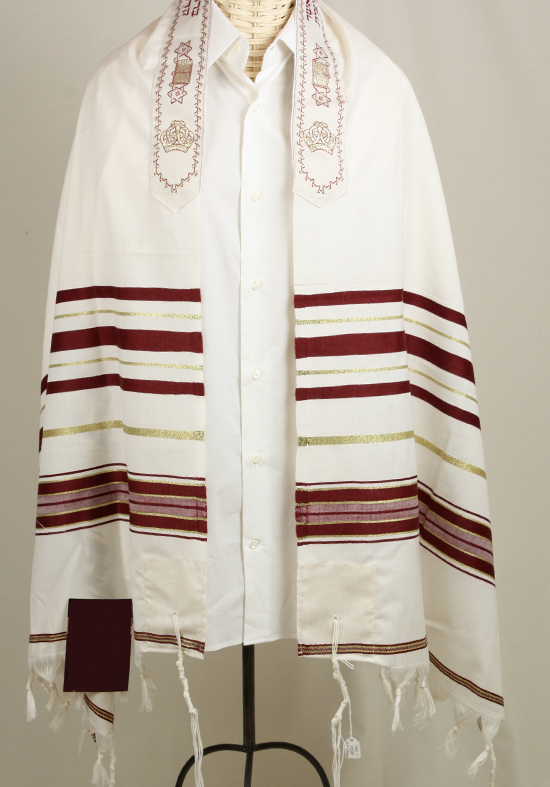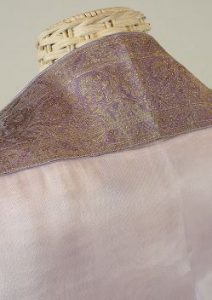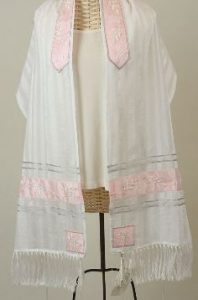I love my job. Watching the tears of joy on a family members’ face as they see their child or grandchild in a tallit for the first time is the most gratifying experience.
In the past eight years when I have been selling tallitot to my customers, whether it be online or in my studio, I see the family experience as a most valuable one.
Buying a tallit for a child to wear at his Bar or Bat Mitzvah symbolizes not only that they will read from the Torah for the first time, but much more. To most families, it means the passage into adulthood when a life cycle changes and their child is growing up. In the Jewish religion, wearing a tallit for the first time seems to symbolize the beginning of a new journey – one filled with responsibility and the obligation to do mitzvot according to Jewish law.
When the entire family participates in the choosing of a tallit, grandparents can witness for a second time a new generation continuing to practice the Jewish faith. La Dor Vador – from generation to generation. The gratitude on a grandparent’s face to be alive to see this mitzvah is beyond words. We say “shep nachis,” …well this is what it is all about.
It is different than picking out a dress or suit for the occasion. It is about buying a religious garment for life and remembering when it was purchased and by whom. Many times an adult male will come to me with a tallit that was given to him at his Bar Mitzvah by his grandparents. He asks me to restore it or to somehow incorporate it in a new one because it has such sentimental value.That is why it is so important to make it a personal experience. We hope that every time the recipient wears his or her tallit, they will remember grandma and grandpa or the family member who blessed them with this wonderful and holy gift.


 important connection to a woman’s heritage. It also lends itself as a focal point of concentration. Usually made of wool, they are often first worn by children on their Bar or Bat Mitzvahs. Traditionally, however, they are only worn by men.
important connection to a woman’s heritage. It also lends itself as a focal point of concentration. Usually made of wool, they are often first worn by children on their Bar or Bat Mitzvahs. Traditionally, however, they are only worn by men. So, what should a woman do if she wants to wear a tallit? According to Rabbi Moshe Feinstein, a woman who wishes to wear a tallit must wear a distinctly feminine one [Igrot Moshe, Orach Chaim V, section 49]. This should not be done as a protest of the tradition, but as a way for a woman to fulfill this mitzvah and recognizing that they are not required to do so.
So, what should a woman do if she wants to wear a tallit? According to Rabbi Moshe Feinstein, a woman who wishes to wear a tallit must wear a distinctly feminine one [Igrot Moshe, Orach Chaim V, section 49]. This should not be done as a protest of the tradition, but as a way for a woman to fulfill this mitzvah and recognizing that they are not required to do so.